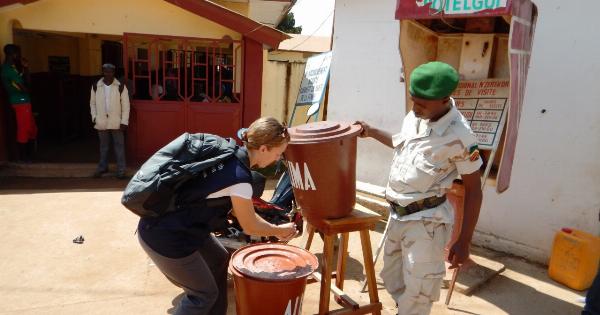Rhinoplasty, commonly referred to as a nose job, is a surgical procedure that aims to enhance the aesthetic appearance and functionality of the nose.
While it is considered a safe and effective procedure, there are cases where the initial surgery may not yield the desired results, leading to dissatisfaction and the need for revision surgery. Failed rhinoplasty can be a distressing experience for patients, but with the right approach and skilled surgeons, revision surgery can help correct the issues and restore the desired outcome.
Understanding Failed Rhinoplasty
Failed rhinoplasty refers to cases where the primary nose surgery did not meet the patient’s expectations.
There can be several reasons for a failed rhinoplasty, including poor surgical planning, inadequate execution of the procedure, unexpected healing complications, or even unrealistic patient expectations. Some common issues associated with failed rhinoplasty include nasal asymmetry, excessive scarring, breathing difficulties, unwanted changes to the nose’s shape or size, and even psychological distress.
Approaches to Revision Rhinoplasty
Revision rhinoplasty is a specialized surgical procedure that aims to correct the issues caused by a failed primary rhinoplasty.
It requires an experienced and skilled surgeon who can analyze the previous surgery and develop a comprehensive plan to address the concerns effectively. Here are some approaches commonly used in revision rhinoplasty:.
1. Detailed Evaluation and Planning
A thorough evaluation of the patient’s nasal anatomy and the outcomes of the initial surgery is crucial before proceeding with revision rhinoplasty. The surgeon needs to identify the specific issues and develop a detailed plan to address them.
This may involve reviewing pre-operative photos, medical records, and performing a physical examination of the current nasal condition.
2. Open vs. Closed Approach
Revision rhinoplasty can be performed using either an open or closed approach. The open approach involves creating a small incision on the columella, the strip of tissue between the nostrils, to access and reshape the nasal structures.
The closed approach, on the other hand, utilizes incisions hidden within the nostrils. The choice between these approaches depends on the complexity of the case and the surgeon’s preference.
3. Correcting Nasal Asymmetry
Nasal asymmetry is a common issue faced by patients who have undergone failed rhinoplasty.
Revision surgery aims to correct the asymmetry by reshaping the cartilage, adjusting the nasal bones, and making precise alterations to achieve a more balanced and harmonious appearance.
4. Addressing Breathing Difficulties
In some cases, failed rhinoplasty can result in breathing difficulties due to structural abnormalities or collapse of the nasal passages.
During revision surgery, the surgeon will assess the nasal airway and address any issues that may be impeding proper airflow. This may involve septoplasty, turbinate reduction, or other procedures to improve nasal function.
5. Correcting Over- or Under-Resection
Over- or under-resection refers to the removal of excessive or inadequate amounts of nasal tissue during the initial rhinoplasty. This can lead to an unnatural or disproportional appearance of the nose.
Revision surgery aims to correct this by precisely reshaping and redistributing the existing cartilage and tissues to achieve a balanced and aesthetically pleasing nose.
6. Management of Scar Tissue
Scar tissue formation is a common consequence of any surgical procedure, including rhinoplasty. In some cases, excessive scar tissue can result in visible or palpable deformities on the surface of the nose.
Revision surgery may involve scar tissue removal, rearrangement of existing tissue, or the use of grafting techniques to improve the overall appearance and texture of the nose.
7. Psychological Support
Failed rhinoplasty can have a significant impact on a person’s self-esteem and mental well-being. It is essential for surgeons to provide psychological support and counseling to patients considering revision rhinoplasty.
Understanding and addressing the emotional aspects of the failed procedure can contribute to better outcomes and overall patient satisfaction.
8. Realistic Expectations
One of the key factors in achieving success with revision rhinoplasty is setting realistic expectations. Patients must understand that revision surgery may not always result in achieving their idealized nose, but it can help improve the existing issues.
Open and honest communication with the surgeon is vital to ensure a shared understanding of the desired outcomes and limitations of the procedure.
9. Choosing the Right Surgeon
Revision rhinoplasty is a complex procedure that requires considerable expertise and experience. It is crucial to choose a surgeon who specializes in revision surgeries and has a track record of successful outcomes.
Consulting with multiple surgeons, reviewing their before and after photos, and seeking testimonials from previous patients can help in making an informed decision.
10. Proper Healing and Recovery
Successful revision rhinoplasty relies heavily on proper healing and recovery.
Following the surgeon’s post-operative instructions, such as avoiding strenuous activities, refraining from blowing the nose, and taking prescribed medications as directed, is crucial for optimal results. Regular follow-ups with the surgeon allow for monitoring the healing process and addressing any concerns that may arise.
Conclusion
Failed rhinoplasty can be a distressing experience, but with the right approach, revision surgery offers hope for improvement.
Through detailed evaluation, planning, and choosing an experienced surgeon, patients can address the issues caused by the initial surgery and achieve a more desirable and satisfactory outcome. Revision rhinoplasty requires careful consideration, realistic expectations, and comprehensive communication between the patient and surgeon to achieve the best results.































